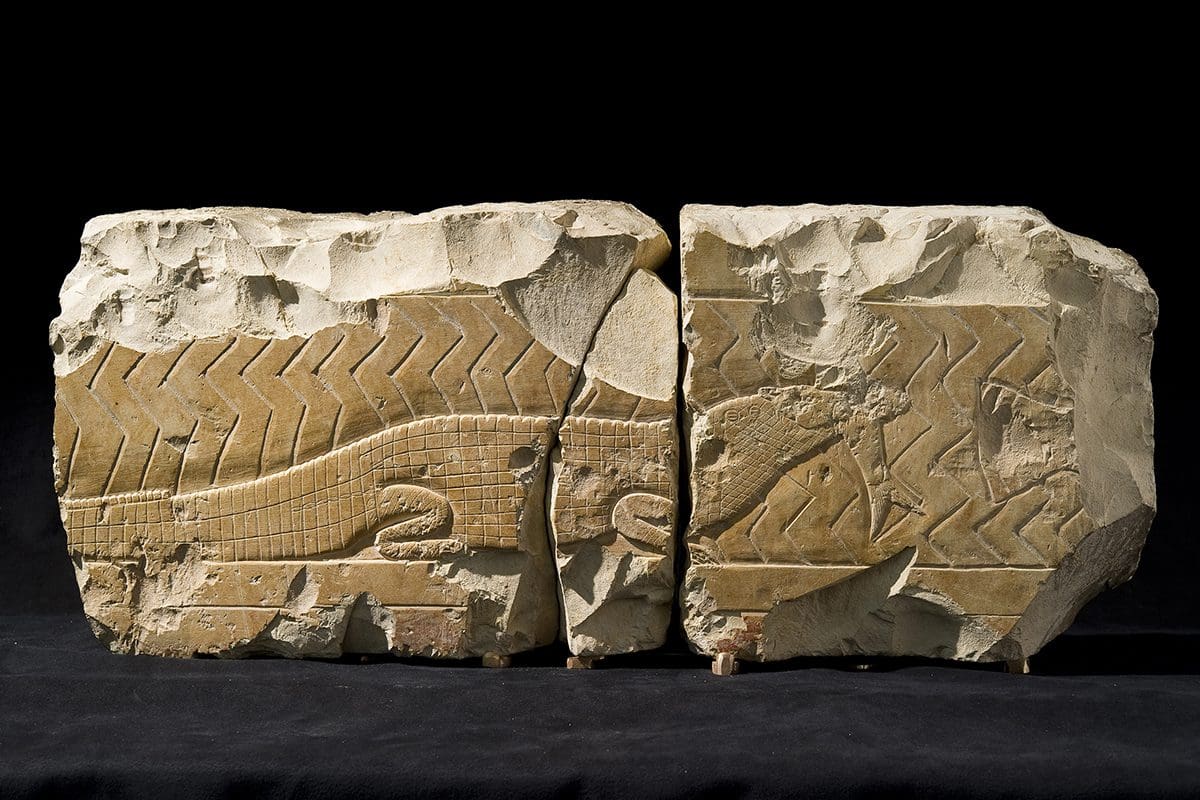History
The Johns Hopkins Archaeological Museum received its first collection items in 1882, just six years after the founding of the Johns Hopkins University. Originally called the “Historical Collection,” the museum was initially housed in the History and Political Science Seminary in Hopkins Hall on the university’s first campus located in downtown Baltimore. By 1915, the museum filled the entire third floor of McCoy Hall, as seen in the historic photograph above. When the university moved to its current location, now called Homewood Campus, the museum was relocated to Gilman Hall. The museum is still located in this historic building.
The Archaeological Museum collections were always used in the teaching and research mission of the Johns Hopkins University. University class listings from at least the early 1900s show that faculty and students regularly worked with objects in the museum as part of their coursework. The current-day museum continues in this tradition, something made all the more feasible with the 2010 renovation of Gilman Hall that provided new spaces and facilities for teaching, research, exhibition, and collections care.
Some recent resources on the use of the museum collections as a teaching collection are provided below:
“Pedagogy and the ‘Working Collection’: Teaching Technical Research and Experimental Archaeology at the Johns Hopkins Archaeological Museum.” Postprints of the October 2016 Penn Museum symposium, “Engaging Conservation: Collaboration Across Disciplines.” London: Archetype, 2017: 19-28.
Torres, J., K. Gallagher and S. Balachandran. “Rehousing a ‘Working Collection’: Perspectives from the Johns Hopkins University Archaeological Museum.” Journal of the American Institute for Conservation, Vol 56, Iss. 2 (2017): 96-112.
Williams, Ellen Reeder. The Archaeological Collection of the Johns Hopkins University. Baltimore and London: The Johns Hopkins University Press, 1984.

Much of the Archaeological Museum collections was acquired in the late nineteenth and early twentieth centuries through donations from notable Baltimore donors, the Baltimore chapter of the Archaeological Institute of America, and university-funded purchases made by Johns Hopkins faculty. The university was also a subscribing member of the Egypt Exploration Fund, through which it acquired objects from known archaeological contexts. The Archaeological Museum also received transfers of objects from other institutions, including The Brooklyn Museum and the Asian Art Museum.
History
The Johns Hopkins Archaeological Museum received its first collection items in 1882, just six years after the founding of the Johns Hopkins University. Originally called the “Historical Collection,” the museum initially housed in the History and Political Science Seminary in Hopkins Hall on the university’s first campus located in downtown Baltimore. By 1915, the museum filled the entire third floor of McCoy Hall, as seen in the historic photograph on the right. When the university moved to its current location, now called Homewood Campus, the museum was relocated to Gilman Hall. The museum is still located in this historic building.
The Archaeological Museum collections were always used in the teaching and research mission of the Johns Hopkins University. University class listings from at least the early 1900s show that faculty and students regularly worked with objects in the museum as part of their coursework. The current day museum continues in this tradition, something made all the more feasible with the 2010 renovation of Gilman Hall that provided new spaces and facilities for teaching, research exhibition and collections care.
Some recent resources on the use of the museum collection as a teaching collection are provided below:
“Pedagogy and the ‘Working Collection’: Teaching Technical Research and Experimental Archaeology at the Johns Hopkins Archaeological Museum.” Postprints of the October 2016 Penn Museum symposium, “Engaging Conservation: Collaboration Across Disciplines.” London: Archetype, 2017: 19-28.
Torres, J., K. Gallagher and S. Balachandran. “Rehousing a ‘Working Collection’: Perspectives from the Johns Hopkins University Archaeological Museum.” Journal of the American Institute for Conservation, Vol 56, Iss. 2 (2017): 96-112.
Williams, Ellen Reeder. The Archaeological Collection of the Johns Hopkins University. Baltimore and London: The Johns Hopkins University Press, 1984.
